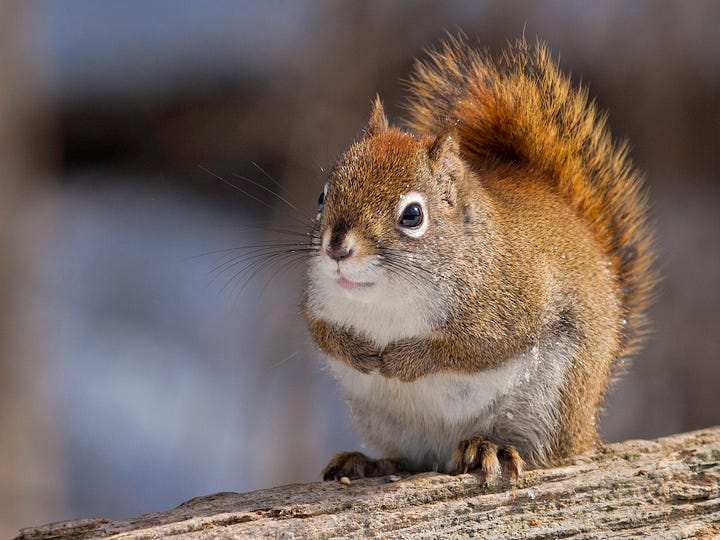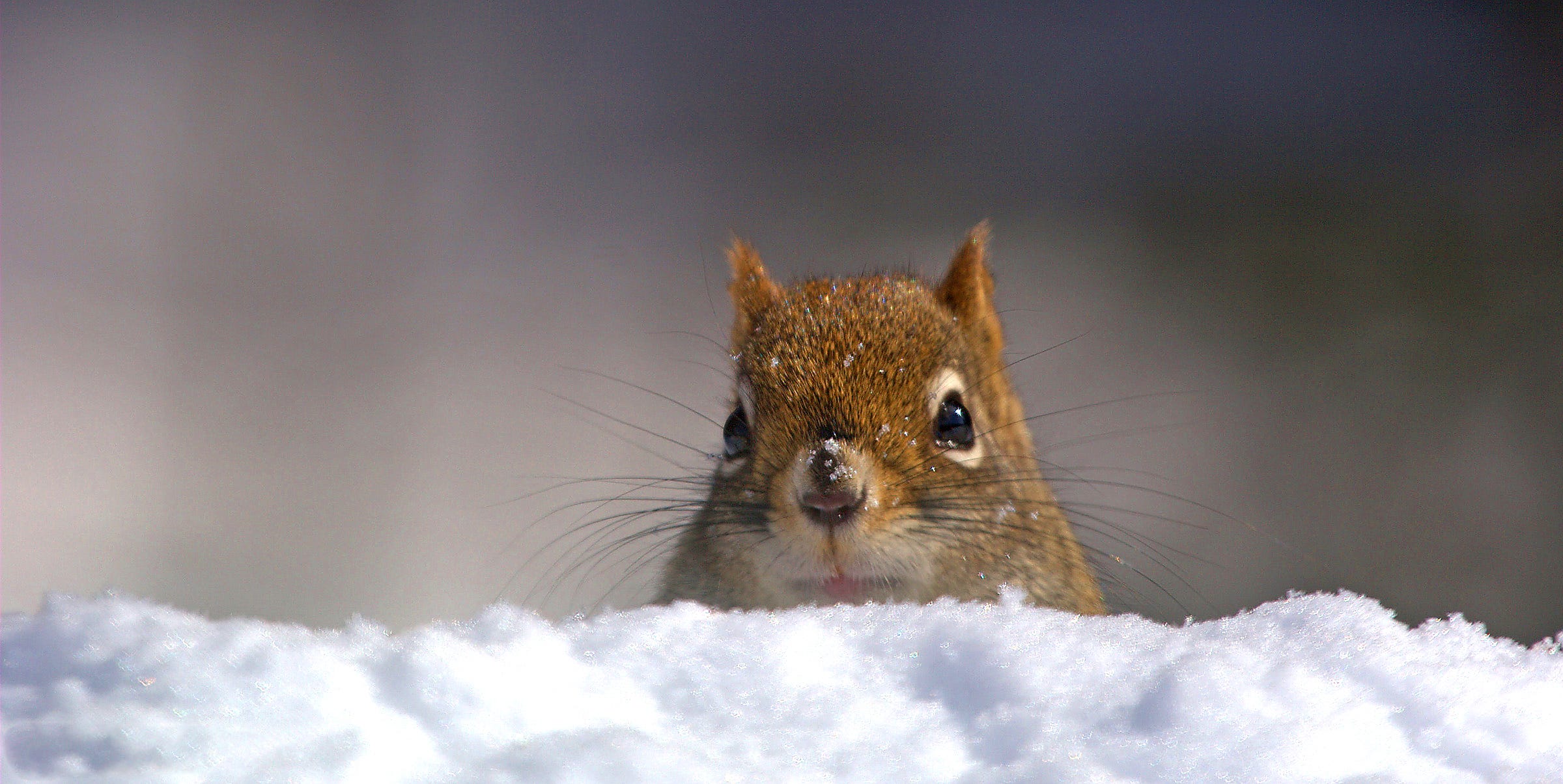THOSE OF YOU watching the world unfold in North America can ignore the usual nonsense of Groundhog Day. A rodent, of course, can no sooner predict the arrival of spring than a rock. Your time on Feb. 2 is better spent on the profound: looking toward the light and enlightenment of nature. You might also look for squirrels having sex.
Beyond cheap thrills, it turns out there is significance to February 2, which falls roughly halfway between the Winter Solstice and Vernal Equinox in the north, and which has long been celebrated among Pagan and Christian traditions. At mid latitudes north of the Equator, early February is when we begin to get 10 hours of daylight. It does wonderful things for us — and for wildlife. That alone is worth celebrating.
Here in Vermont, for example, I’m already hearing Brown Creeper, Tufted Titmouse, Black-capped Chickadee, House Finch, and other birds breaking out into song. They will sing even if it is below zero at dawn this time of year. No, sorry, spring is not around the corner — not by a longshot. The birds instead sing to the light.
Immutable and predictable, day-length is a more reliable calendar for animals. Photo-receptors in bird brains somehow measure the increasing light of day, which triggers them to produce hormones that act like birdie Viagra; it revives their sexual organs from a state of dormancy. So when spring actually arrives in May and June, when food is more abundant for their young, birds will be fit to breed.
Rodents, however, are already randy and ready to reproduce (sorry). Well, not the rodent known as the groundhog (Marmota monax), or woodchuck as we call them here in Vermont, which are now hibernating in winter burrows. But the tree squirrels do not hibernate. The most common among these rodents across temperate regions around the world — Eastern Gray Squirrel, Fox Squirrel (my fave), American Red Squirrel, and Eurasian Red Squirrel — are marvels of adaptation in our midsts. Winter puts no chill to their procreations.
As the daylight now advances, female squirrels will come into estrus for only about eight hours on a single day this season. And males sometimes outnumber females by as much as five to one (or even 20 to one). This is not a civil situation when it comes to breeding.
So fierce is the competition for a mate that males might spend several days following and sniffing a female before her estrus. Should he be too forthcoming, too early in his advances, she will rebuff him with a swat to the face or a nasty bite. And when those precious eight hours finally arrive, males compete or fight among themselves for her affection, which amounts to a copulation that might last about 20 seconds. (Females can mate with multiple males during estrus.)
Out there in the trees, it is a squirrel free-for-all. “To the casual observer, what ensues is probably best described as pure and unadulterated chaos,” write biologists Michael A. Steele and John L. Koprowski in their book North American Tree Squirrels.
Yet how many of us have witnessed this chaos? How many dismiss squirrels as bird-feeder marauders or otherwise unworthy wildlife? How many of us recognize tree squirrels for their true gifts as the most reliable and watchable of all wildlife year-round?
As more of us live in cities and away from nature, as we grow captive to glowing screens and the algorithm and consumerism, as we kill and lose our connection to biodiversity, tree squirrels unwittingly remain wild animals among us. They know nothing of our falling from nature. They ask nothing in return.
In Punxsutawney, Pennsylvania, and in scattered other sites around the continent, as men parade around some hapless groundhog for the television cameras, the chickadees and finches will be singing from the treetops where the squirrels will be making love by the light of day.
So let us recognize this chosen day in early February and the weeks to come, no matter how cold, as a festival of song and light and reproduction. Let us celebrate the squirrels, resplendent in their “pure and unadulterated chaos.”


Postscript
Although groundhogs hibernate individually in underground burrows, researchers working in Pennsylvania more than a half century ago noticed males out and about in early February. Female woodchucks, which typically breed in March, were nowhere to be found. With no food or females available in February, what would motivate a male woodchuck to emerge into the cold? As it turns out, those males seemed to be engaging in old-fashioned courtship: dating.
During what another researcher calls “arousal events” (Snyder 1960), a male emerges early to seek out females in their burrows — simply for a visit, not much more, after which he heads back to his own burrow for more slumbers. Presumably these visits pay dividends when it comes time to court and breed later — you know, like another February ritual: Valentine’s Day.
References
Robert L. Snyder and Christian, John J. (1960). Reproductive Cycle and Litter Size of the Woodchuck. Ecology, Vol. 41, No. 4, pp. 647-656.
Male groundhogs hibernate less to visit the ladies. Penn State University. 24 Jan 2003.






Squirrels are amazing. I like to try and see some new aspect of their behavior when I observe them at close range in my backyard. I marveled at their dexterity a couple of days ago when I watched them rapidly pick up and hold sunflower seeds between their vestigial thumbs.
Ok. I get it. Light matters to me as well.
And I have always enjoyed watching squirrels. They are very smart in the wilds. On roads not so much. They are not hardwired for avoiding vehicles.